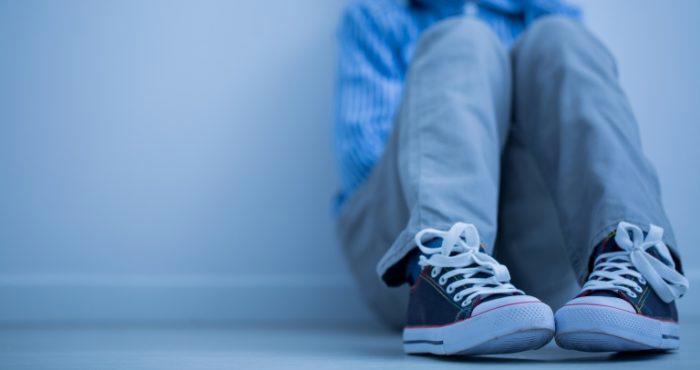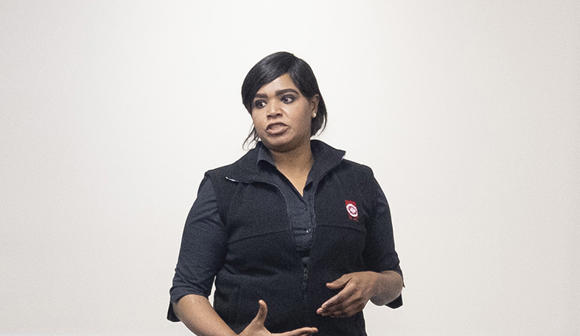The Difference Between Moodiness And Poor Mental Health In Children And Adolescents

Teenage angst is a given for almost all adolescents and understandably so with the influx of hormones, social pressures and overall life changes throughout this time. But, sometimes we get caught up in labelling warning signs of poor mental health as normal teenage behaviour when they’re in fact signs of something much more serious. This can also be the case in children and even infants, in recent years society has seen an increase in poor mental health from a younger age than ever before.
Parents, guardians, grandparents, older siblings, sporting coaches and educators should all be aware of the signs and symptoms that point to poor mental health and how to address them. At times the lines might be blurry but it’s important that behaviour is identified early on to prevent it from snowballing into a bigger and longer term issue.
Statistics about mental health in children
According to Beyond Blue one in seven young Australians aged between 4-17 years suffered a mental disorder between 2013-14. This includes anxiety disorders, ADHD, Autism Spectrum Disorders, Eating Disorders, Mood Disorders (Depression and Bi-Polar) and even Schizophrenia.

Why Is The Mental Health of Our Youth So Important?
Experiences throughout childhood and adolescence have the ability to substantially shape an individual’s self-identity for life. Over these years people are faced with hurdles, life choices and experiences that may seem difficult to manage and confusing at the time, how they choose to respond and cope can lay the groundwork for their coping mechanisms in future.
Sometimes the strategies used for managing our emotions are not always best for our mental health which can adversely impact us in the long term. Beyond Blue found that three in four mental health conditions develop before the age of 24 and up to half of these conditions surface by the age of 14.
This is likely a result of individuals experiencing a barrier that prevents them from both communicating and regulating their emotions in a healthy manner and developing personal and reliable relationships with others. Childhood and adolescence are monumental learning phases in life and it’s the responsibility of caretakers to provide the tools, resources and support to develop healthy coping strategies as well as learn and identify the difference between a bad day and poor mental health.
How To Identify The difference Between a Bad Day and a Mental Health Issue
There can be many grey areas when trying to identify the difference between normal negative behavioural traits and serious signs of poor mental health in children and adolescents.

Concerned For The Mental Health Of A Child Or Adolescent?
If you’ve identified the possibility that a child or adolescent close to you might be suffering from poor mental health the first thing you need to do is start a conversation. Ask them how they’re feeling? What’s been going on in their life recently? How are they coping with that experience? Are they talking to anyone about it?
By acknowledging a change in character and providing an ear to listen you will prompt the child/adolescent to also reassess their own feelings and experiences. Ensure that they know it’s important to talk and rely on others if they are struggling or suffering from negative thoughts and feelings. This will set the structure necessary for them to be able to identify changes in themselves, an important skill to have in future.
Listen carefully, don’t provide judgement and ask the child/adolescent what they think will help them most. Ask if they want to talk to a professional.
If You Deem It As Normal Child/Adolescent Behaviour
- Monitor the behaviour over a one or two week period
- Emphasise the importance of continuing with normal routine and favourite activities
- Maintain social situations
- Ensure they remain active
- Revisit the conversation and problem
- Schedule an appointment with a mental health professional if the behaviours have not improved
If the child/adolescent is showing serious signs of a mental health crisis listen to your HEAD (Hazards, Engage, Action and Debrief), book them in to see a mental health professional as soon as possible and if in fear of suicide call triple zero (000) immediately.
Poor mental health is at an all-time high in Australia, with 1 in 5 Australians impacted in any one year. With the stressors faced and life changes throughout childhood and adolescence, it’s no surprise that the problems are stemming from such a young age. It’s up to the caretaker to remain diligent and observant of any signs and symptoms which may reflect a child or adolescent is not coping.
Children and adolescents mirror those around them, if you as the caretaker are not acknowledging their clear signs of turmoil then you are planting a detrimental seed to not talk about their feelings, address a serious problem and to suppress the emotions they’re experiencing. Understandably, these behaviours will have negative implications throughout their lifetime and can turn into much bigger issues when faced with heartbreak, traumatic experiences and excessive stress.
Pave the way for the children and adolescents in your life. Show them it’s ok to talk about how they’re feeling. Remind them that it’s important to share their experiences with others and how it’s impacting their life. Teach them to express themselves openly and to not keep anything in. Be the advocate that they so desperately need at this fragile and influential time in their life.

Mental Health and Wellbeing Essentials Workshop
Delivered in a face-to-face workshop setting. Suitable for members of the general public interested in prevention skills and strategies. Students may or may not be employed or part of a workplace.

Mental health and crisis support (Face-to-face)
Gain the essential skills and confidence to recognise and support people with a range of mental health issues such as depression, anxiety, suicide and addiction.

CARING FOR BABIES AND KIDS
Designed for parents and carers. Learn to manage basic first aid situations specific to babies and kids up to 7.
